|
If you work for a small nonprofit like I do, you probably know that it's hard to find time to work on planned giving. Planned gifts don't usually help you reach that all-important year-end fundraising goal, and there's a lot of technical terminology that, as a new fundraiser, you may not feel confident in discussing with donors. In this article, I will give you lots of reasons why you should be promoting planned gifts, a feasible plan to get started, and help demystify some of the basic terminology. National Estate Planning Awareness Week (NEPAW), held annually during the third week of October, is a prime opportunity for nonprofits to highlight the importance of estate planning and the opportunities of estate gifts. The goal of NEPAW is to increase public awareness of the need for proper estate planning, which can benefit individuals and their chosen charitable organizations significantly. My hope is this article will spur you to prepare now to fully leverage National Estate Planning Awareness Week so planned giving leads come to you! The Relationship between annual giving and planned givingDonors make annual gifts from income. Donors make planned gifts from assets. The connection comes because planned gifts usually come from your most loyal supporters not necessarily the wealthiest. This is why you should never undervalue annual gifts and you should have a consecutive year giving society to cultivate those donors and encourage loyalty. Planned gifts are usually much significantly larger than annual gifts because they are made from assets accumulated over a lifetime. In fact, according to industry reports, planned gifts are typically 200-300 times the size of an average annual donation, underscoring their importance for long-term financial health of the nonprofits we work to support. Cultivate your annual donors and you will be surprised how willing they are to discuss a planned gift with you. That is their legacy to a cause that they have shown through many years of generosity means much to them. Larger planned gifts rarely fall out of the sky from mysterious anonymous donors. The donors who will make the largest planned gifts your organization will ever receive are already in your database! And they are giving at much more modest levels than you expect. Strong stewardship of annual donors is the key to planned giving success. It takes a while, but the payoff is extraordinary. These are the folks that are here for your mission and invested in your organization’s long-term success. Now that you know who your planned giving prospects are, you can target educational messages about planned giving opportunities to them, meeting them where they are. Knowing that our best planned giving prospects are your nonprofit’s most loyal annual donors and fans, take the messaging to them on the same platforms you use for annual giving: mail, email, your website, and social media. Increase AwarenesS Many folks are unaware of the substantial benefits that planned giving can offer both to themselves and to the nonprofits they support. NEPAW provides an ideal platform to educate donors about the various forms of planned giving, including bequests and beneficiary designations. Planned gifts often provide significant tax benefits to the donor while offering a critical revenue stream for nonprofits. By focusing on the dual advantages of planned giving, nonprofits can attract more interest and commitment from potential donors. Build Trust and CredibilitY Demonstrating a well-organized planned giving program can significantly enhance a nonprofit's credibility. By displaying their expertise and commitment to planned giving during NEPAW, nonprofits can build trust with potential donors. This confidence is crucial, as donors are more likely to include organizations they trust within their estate plans. Providing clear, accessible information can demystify the process of planned giving and encourage more donors to consider it as part of their estate planning. Reuse and Recycle Planned Giving ContenT Whatever content you create for National Estate Planning Awareness Week can be repurposed throughout the year by designating another time as <<Your Organization>>’s Legacy Giving Week! Simply choose a date or week that resonates with your organization—perhaps a meaningful anniversary or milestone—but don't feel limited to that. You can pick any week that works best for your team and your supporters. Once you have those dates, swap out "National Estate Planning Awareness Week" with "<<Your Organization>>’s Legacy Giving Week” in your plan. This simple tweak allows you to maximize the impact of your carefully crafted materials and engage your community in planned giving conversations multiple times a year! TACTICS FOR SUCCESSTactic #1: Planned Giving Landing Page Having a landing page on your website about planned giving opportunities doesn’t have to be complicated. You can start by just highlighting the two simplest, most common vehicles for planned gifts: bequests and beneficiary designations. But having some resources available on your website signals that you accept and encourage these kinds of gifts. Tactic #2: Educational Campaigns Nonprofits can launch educational campaigns during NEPAW to inform donors about the benefits of planned giving. These campaigns can include webinars and workshops but can also be as simple as informative content distributed via newsletters, emails, and social media. These campaigns can push your prospects to your landing page for more information and to contact your staff. Bringing the planned giving leads straight to your inbox. Tactic #3: Partnerships Forming partnerships with financial advisors, estate planners, and legal professionals can enhance the nonprofit's planned giving program. These partnerships can provide donors with the expert advice they need to make informed decisions about their estate plans. While there are lots of potential benefits, this strategy can be time-consuming if you don’t already know one of these professionals. It is worth putting these sorts of skills on your wish list for board members and volunteers though. Tactic #4: Testimonials Highlighting success stories and testimonials from planned giving donors can be a powerful way to inspire action. The absolute BEST way to do this is by crafting a donor profile of someone who has already set up a bequest or other planned gift to your nonprofit. If you have a generous supporter in mind, reach out and ask if they’d be willing to share their story during National Estate Planning Awareness Week. Send them a few thoughtful questions and ask for permission to highlight their journey. Most donors will be thrilled to express their love for your mission and inspire others to give. Don’t forget to ask for a photo or two to accompany their story, and make sure they’re comfortable with sharing not just that they made a planned gift but also the amount. (Some donors are comfortable with one but not the other.) Use this story strategically during NEPAW: share it as an extra social media post on Monday, include it in the Tuesday email blast, and feature it in the final Monday recap email of your campaign. Here are some questions to guide the testimonial:
The Easiest Place to Start: Bequests and Beneficiary DesignationS BEQUESTS Bequests are the simplest, most flexible, and most versatile way to ensure that donors can help nonprofits continue our work for years to come. There are numerous options when it comes to bequests:
BENEFICIARY DESIGNATIONS Making a nonprofit the beneficiary of some of their assets is an easy method for donors to support your organization. All they need to do is name your organization as a beneficiary to receive assets such as retirement plans and life insurance policies after the donor’s lifetime. The donor would simply fill out a form that is entirely separate from their will—which makes this approach an uncomplicated way to give. Not only are beneficiary designations an easy way to give, but they are also flexible — donors aren’t locked into their choices today. Donors can review and adjust beneficiary designations anytime they want. They can make your organization a sole or partial beneficiary of a retirement account or an insurance policy. Beneficiary Designation Checklist:
This is great but I still don’t have the time... Educating donors about planned giving opportunities, like bequests and beneficiary designations, can be highly beneficial for nonprofits. The reality is that nonprofits cannot afford to ignore planned giving, whether we feel we have time or not. Here are some key points to emphasize:
QUESTION FOR YOU? Do you utilize National Estate Planning Awareness Week or have some other routine educational campaign about planned giving for your supporters? What have you found that works best to generate interest about planned giving? Let me know in the comments! Lastly, I understand the complexities of time with a small nonprofit staff. Maybe you are a solo fundraiser for an organization or perhaps you are a CEO or founder, or board member and your organization doesn’t yet have a dedicated fundraiser on staff? If that’s you, I’ve designed a way to enhance your planned giving program with minimal effort. With National Estate Planning Awareness Week just around the corner (October), I've got the perfect solution to save you time and effort without sacrificing your nonprofit's unique branding and voice. Check out my Celebrate National Estate Planning Awareness Week Bundle for only $84.99! Read the PS on this post to see what’s included. Cheers! PS - What's Inside the Celebrate National Estate Planning Awareness Week Bundle?:
Why You Need This Bundle:
PPS - I hope you’ll continue the conversation by subscribing to Real Deal Fundraising. When you subscribe, you’ll get my monthly newsletter email, which includes the best articles on fundraising, productivity and cool stuff every week. The whole thing is weekly curated awesomeness as well as freebies like webinars, instructional videos, and whatever else I can put together to be helpful to you! If you liked this post, you may also like these:
0 Comments
We are all scrambling. The situation with COVID-19 changes day-by-day and hour-by-hour. Hopefully by now, nonprofits have taken steps to allow all but absolutely essential personnel to work from home. Fundraising, while essential, is a function that can be done from a home office. The big question is: How can we keep our donors connected to our organizations in this unstable environment? When it became clear that I would not be allowed to travel anymore for work, I fell back on a maxim I heard somewhere early in my fundraising career. It rhymes so that’s convenient and an aid to memory. Near Dear Clear In any circumstances where rapid change is taking place, we must take great pains to keep our donors near, dear, and clear. What does that mean as a guide to practical action and how can we all undertake those functions while protecting ourselves and our donors from coronavirus? Let’s take each part of the maxim in turn: Near: Be in Contact!You will need to leverage all forms of media at various levels to keep in touch with your donors. First, for your major donors, set up as many one-on-one Zoom meetings as you can reasonably handle each week to check in with them and make sure their families are doing okay right now. Take it week-by-week so it will not be overwhelming but striving for 6-8 substantial phone calls or Zoom meetings with major donors per fundraiser seems appropriate. Secondly, utilize digital means of connection as much as possible. The president of the institution I work for is doing a series of Facebook live discussions this week at the same time every day. Send email updates or text your constituents. Don’t bombard them with info but if you have meaningful information to report, do so on all available channels. If you have Facebook groups, use those to communicate too. Encourage your supporters to share info so it gets in more Newsfeeds and inboxes. Third, for your mid-level donors or major donors that you cannot check in with immediately, don’t forget about good old mail and phone. You can do a quick check-in calling campaign one day per week and write some hand-written notes. (Of course, please be careful with your mail protocols for hygiene. Use self-adhesive stamps and tape if possible. Barring that, seal or affix with a sponge. And wash your hands well before handling mail to be sent out.) Dear: Express GratitudeYour messaging needs to let donors know that you care about them as people. It’s not just about expressing our usual level of stewardship and gratitude. This is thanking them for believing enough in your organization’s mission to hang in there in this time of great change and uncertainty. Express gratitude not only as a staff member but express gratitude on behalf of those your organization serves. Let them know that because of them, your mission continues and will continue after COVID-19. Clear: Have Clarity, Openness, and HonestyMake sure your organization is crystal clear on its priorities. The first of which should be the health, safety, and welfare of those they serve and those who work for the institution. Repeat this often to your constituents.
However, do not shy away from honestly telling donors how this crisis is affecting your organizational needs and its finances. Your major donors and board members especially deserve the candid talk about what is needed, what might be needed, and why. Did you find the framework of near, dear and clear helpful in thinking about how you are keeping donors connected these days? What other strategies have you tried in the last couple of weeks that keep donors near, dear, and clear? Tell me below in the comments! Again, I hope this was helpful to you. If it was, please leave me a comment below. Also, if you found this very helpful, I hope you’ll subscribe. By doing so, you’ll get my FUNdraising Friday emails every Friday with pick-me-ups, helpful articles, and cool freebies. Humor and a commitment to continual learning will no-doubt help us all through this crisis. Take care and be well, Jessica PS - If you are feeling stressed and anxious and burnt out due to coronavirus, you're not alone. Because so many are facing unprecedented challenges and pressure right now, I'm hosting a free webinar on the topic of Self Care for Non-Profit Professionals. It will take place April 1st. Register today as there are only 100 spots! What if I told you that there was a source of annual fund dollars out there that could cost you 18 cents to raise a dollar and raise those funds very quickly in a short period of time?
And what if I told you that you probably were not currently utilizing this particular source of revenue for your institution? You would be interested, right? Let me tell you what the secret source of revenue is . . . Facebook ads. Yep, Facebook ads. Believe it or not, I recently did a test in which I ran Facebook ads for year-end fundraising and the cost to raise a dollar was as low as 18 cents. In all honesty, this test grew out of the fact that I work for a very small shop and I’m the only fundraiser. I needed to come up with a calendar year-end giving campaign for our social media. Last year I spent a lot of time crafting unique messages to be used for each day in December. This year I was just running out of time and had no real creativity left in me. So instead, I decided to craft three very targeted year-end promotional messages and boost them significantly with Facebook ads. I had a little bit of extra money in my budget that I re-purposed in order to do this. Not a ton. I'm talking less than $1,200 to experiment with. So I divided my ad dollars up between three boosted ads. The first two were to promote general giving. One was targeted to those outside of our normal constituency on Facebook (people who don’t currently like our page). The second I boosted specifically to people within our community (who currently like our page). The third leg of this campaign was a specific boost to encourage our constituents to become “sustainers” (recurring monthly donors). All three of these campaigns were successful. First, our campaign outside of our normal constituency reached over 44,000 people who may or may not have ever heard of the school before but had our affinity with the religious community that we serve. We also garnered 14 new page likes. In the general year-end giving part of the campaign, over 500 people clicked on our giving website. We got 24 gifts out of this campaign, totaling almost $5,000. The results came out to only $0.18 to raise a dollar! This was revelatory to think that we could not only do public relations and communications work, developing our constituencies on social media, but at the same time raise some serious money The monthly sustainer campaign was also quite successful. We did not spend very much on that campaign, only about $100 but we got 4 new sustainer donors. These new donors represent $65 monthly (or $780 more per year). That doesn’t even fully represent the lifetime value of those monthly donors. If you just take the first year of value from those monthly donors then it was 34 cents to raise a dollar for this micro-campaign. I would argue it is well worth it when you consider that most of these donors will roll on from year to year as ongoing monthly donors I was surprised that something like Facebook ads could actually work for fundraising. I think my bias against it is because we want these digital mediums to be a free way to reach people. We know they have power to reach people but don’t want to pay for it. And yet, we know that mail and phone are worth the investment. Why are we not willing to invest real money in the digital mediums yet? Facebook (at least) is here to stay. It’s a reliable way of reaching people and we should start thinking about Facebook (and other forms of social media) with the same mindset we use when we think about phone to mail. Namely, that you have to spend money to make money. We need to start being smart about spending part of our fundraising budget on social media. Run some tests. Look at them with an eye to return on investment. Track the same kind of statistics that we track for phone and mail fundraising, including cost to raise a dollar. If you haven't been utilizing Facebook ads in order to grow your constituency on Facebook and raise real money, I would encourage you to undertake a test. Maybe run your fiscal year-end campaign or use it around a day of giving or some other point of urgency. You can gain new donors, new Facebook fans, and real money. You can do all those things to the tune of 20 cents to raise a dollar. I would argue it is worth the investment. Can you lobby for a little extra money in your budget ($500 or $1,000 or $2,000) to experiment with this medium? If it works, put it into your plan for next fiscal year. Do you already do Facebook ads? If not, is this something you could try? Let me know how it goes. As always, comments and questions are welcome and encouraged! Cheers, Jessica PS - If you liked this post, you might also like these:
PPS - If you found this article helpful, please comment and let me know. Also subscribe to Real Deal Fundraising so you don't miss a post! You'll get my guide to Call Center Games for Free! 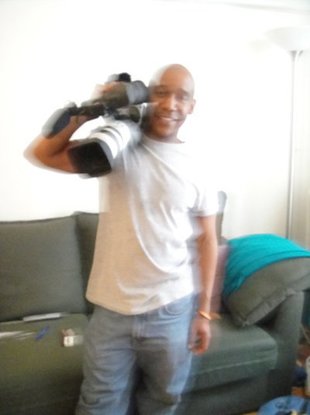 Video is more and more a huge part of the storytelling process for fundraisers. It's a great way to communicate the impact of philanthropy in the world. But, most fundraisers aren't video professionals. Once you have your video done, what are the best practices to get your constituents to watch it? I asked my friend and colleague, Ndlela Nkobi, that question. Here are his 5 best tips for getting your message seen! Enjoy! -- Jessica Cloud, CFRE Congratulations on finishing your organization’s video! After weeks (sometimes months) of planning, shooting, and editing, you have finally uploaded your film to YouTube. Now what? How do you make sure that your video gets the views it deserves and has its intended impact? Though there are no guaranteed ways of making your video go viral, here are some steps to make sure the people who need to see the video actually see it, watch it and take action. 1. Reinforce Your Call to Action Videos are generally created to get people to take some action (sign a petition, donating, joining a mailing list . . .) and your call to action in your video is where you ask your audience to take that action. Make sure you reinforce that call to action whenever you get a chance (your website, YouTube, your platforms). The ultimate success of your video will be based on how many people take you up on your call to action. 2. Have a Great Thumbnail Pick an engaging still image to give your audience a quick snapshot of your video. That thumbnail is also the image that is generally automatically used when the video is shared on social media and on platforms like WordPress. Consider creating a custom thumbnail that could also includes words that would further draw the viewer in. 3. Pay Attention to your YouTube Descriptions, Titles, Tags The title, description and tags you use on YouTube will not only help people find your video when they search for related content but they should also draw people in to watch the video. Not everyone is going to see the video on your website so give your viewer all the information they need to take the next step in your video description. 4. Place Video on Your Website Placing your video on your website gives you much more control over how the video is presented to viewers with things like the call to action, video placement and supporting text/images/graphics. 5. Promote the Video on Your Platforms Once the video is ready on YouTube and on your website, share it widely on your various platforms (Facebook, Twitter, mailing lists, . . . ) Your platforms will be one of the main ways that the people in your community find out about your video. Don’t be afraid to repost content (especially on social media) to make sure as many people see your post as possible. Bonus action: Check Your Analytics Here is another area where you get to define what success looks like for your video (or campaign). Whether you are looking at Google Analytics or YouTube analytics (ideally you are doing both) this is where you get to see how successful you were with things like page views, videos views and how long people are looking at your video. It is also important to look at engagement (likes, shares, comments . . .) Analytics and engagement are matrices you use to help you plan for the next videos you are working on producing. About the author: Ndlela Nkobi is a filmmaker and online video content creator based in New York City and Johannesburg. He works with small businesses, nonprofits, consultants and artists to connect with their clients through the use of video. You can see his work at ndlela.tv. Ndlela Nkobi has worked for Center for New Media Teaching and Learning (Columbia University) and Third Sector New England (Boston, MA). He has worked with Center for Environmental Research and Conservation (Columbia University), New York City Department of Education, Nonprofit Consultants Network (Boston, MA) and Starr King School for the Ministry (Berkeley, CA). Hi readers, I hope you enjoyed this guest post. Do you have additional tips for how to get the most reach on promotional videos? Comments and questions are, as always, welcomed and encouraged! Cheers, Jessica Cloud PS - If you liked this post, you might also like these:
PPS - If you found this article helpful, please comment and let me know. Also subscribe to Real Deal Fundraising so you don't miss a post! You'll get my guide to Call Center Games for Free!  This week's feature is an interview with Jake Strang, now the Director of Annual Giving and Alumni Engagement for the Tepper School of Business at Carnegie Mellon University. Jake was, until recently, the Senior Associate Director of Annual Fund Program for Columbia University, where he played a role in the establishment of Columbia Giving Day, among many other things. Columbia Giving Day has become a tradition at Columbia, raising over $14 million in 24 hours this year. Jake started his career in fundraising as a Carolina Caller at the University of South Carolina, when I managed the call center. I'm so proud of his success! I asked Jake some questions about getting started with giving days and what strategies have been the most successful in his experience.
*Giving Tuesday is a campaign to make the Tuesday after Thanksgiving dedicated to charitable giving, countering the commercial focus of Black Friday and Cyber Monday.
No one department is responsible for a successful giving day. Working with your team is really the key to making the day a success. Often, creative solutions are needed to accomplish the overall goal and strong partnerships are what make it possible. Giving Days must be a team effort between everyone from annual giving to gift processing to web initiatives and marketing and communications. Without bringing in the full team and having support from senior management giving days can see only limited success. Challenge Matches and Incentives Challenge matches and incentives are another essential part of giving days. As fundraisers, we need to ask ourselves what our donors are asking themselves, “Why today?!” The answer is to make the gift go further via matching funds, engage new and returning audiences, build social reach, and set organization records. Among other reasons, this is why the giving day model truly works. Donors want to know they’ve made a difference, not just by giving but also by giving on this particular day. More and more we see the rise of the digital age in giving. How do you get donors interested and how do you keep them coming back? By providing live updates on the day, hourly challenges and friendly competition, donors are incentivized to come back and check on the progress throughout the day…and hopefully make an additional gift if they’re engaged! Innovation Don’t be afraid to innovate and try new things. Giving Days are a great platform for my two favorite words “pilot program.” Because the campaign is only 24 hours, it is special and should be treated as such. Giving days are a great place to test new ideas on a small scale and build them out once you see the response of your audience. At Columbia, we used Columbia Giving Day as an innovation springboard. Numerous pilot programs and technologies were created and then reused in everyday giving because they started on Giving Day.
By "gamificating" our ambassadors, they were encouraged to post, share, and get likes/comments on their status updates. We gave away prizes to our top ambassadors to reward them. We actually found that in year 1, our top ambassador was an international non-donor who made his first gift on Giving Day. After the success of the program, we later transitioned it to the Alumni Association who has continued to build and see success with engaging volunteers across the US and internationally in this way! Throughout the year, ambassadors are supplied content from events, graduation, as well as other top performing social posts keeping them engaged as they promote on behalf of the school. More about Jake Strang: With over a decade of fundraising experience, Jake Strang currently serves as the Director of Annual Giving and Alumni Engagement at the Carnegie Mellon Tepper School of Business in Pittsburgh, PA. He is responsible for overseeing annual giving, alumni marketing, and volunteer programs for the school. Prior to his current role, he spent four years with Columbia University as the Senior Associate Director for Annual Fund Programs. While there, Jake oversaw a number of Annual Funds, special initiatives and worked on the core team for the first five Columbia Giving Days. He began his fundraising career with Ruffalo Noel Levitz as a student caller for his alma mater, the University of South Carolina. He later was responsible for managing the phone programs at both South Carolina and Columbia University. Strang holds a Bachelors of Science in Marketing and Management from the University of South Carolina’s Darla Moore School of Business and Master of Science from Columbia University in Fundraising and Non-Profit Management. An alternate title for this post could be “How I was able to coach my daughter to complete her raffle ticket sales for dance in 30 minutes”
I had no idea it was coming but my daughter left her acrobatics class with an envelope informing us that we had to sell 20 raffle tickets at $2 each. My family has a lot going on and I wanted to finish this project quickly and simply. But, I also wanted her (at age seven) to take responsibility for this project and learn something from it. We discussed it on the way home and I had her practice a “pitch”. It was simple: “Would you like to support my dance school by purchasing a raffle ticket for a chance to win $200 for only $2?” By the time we made it home, she had it nearly memorized. Then I had an insight! I would film a short 30 second video of her saying the line and then doing a backbend. Then I would post it on Facebook so friends and colleagues would see it. We had commitments for the entire batch and then some in about 30 minutes! We had to pick up another 20 tickets today. There are 3 reasons that I think this little project worked so well: The right audience I’m pretty active on Facebook and I often post videos of my kids and their accomplishments. So, my daughter had a kind of fan club already ready to be interested in whatever she’s doing. (Don’t worry. I am super careful about my privacy settings.) The right medium I could have walked around the neighborhood with her or had her ask people at church to buy a ticket, but that would have taken all week probably. I’m already connected on Facebook to everyone from the neighborhood and church anyway. So, this was perfect as an initial step. A soft ask first on Facebook and if we need to go to a harder sell, we could later. The right messenger Coming from me, it would be people doing me a favor. That’s not as compelling as supporting a very cute little girl who just learned to do a backbend and delivered her fundraising pitch perfectly on video. Next time you have to do a fundraiser quick for a specific purpose, consider seriously what the best niche audience is, where the best place to meet them with the pitch is (medium), and who is the best person to do the asking. If you get these three things right, you can raise the funds and raise them quick. |
Jessica Cloud, CFREI've been called the Tasmanian Devil of fundraising and I'm here to talk shop with you. Archives
June 2024
Categories
All
|


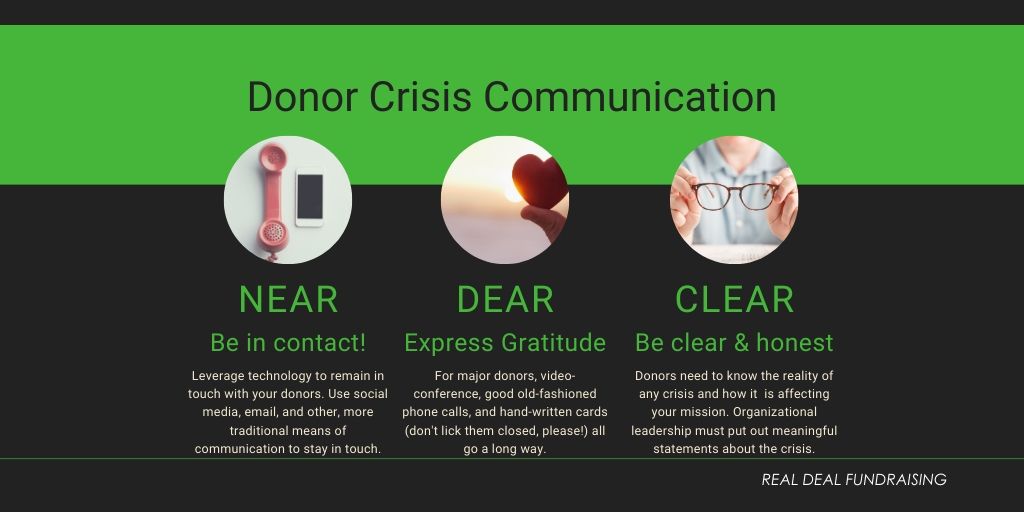
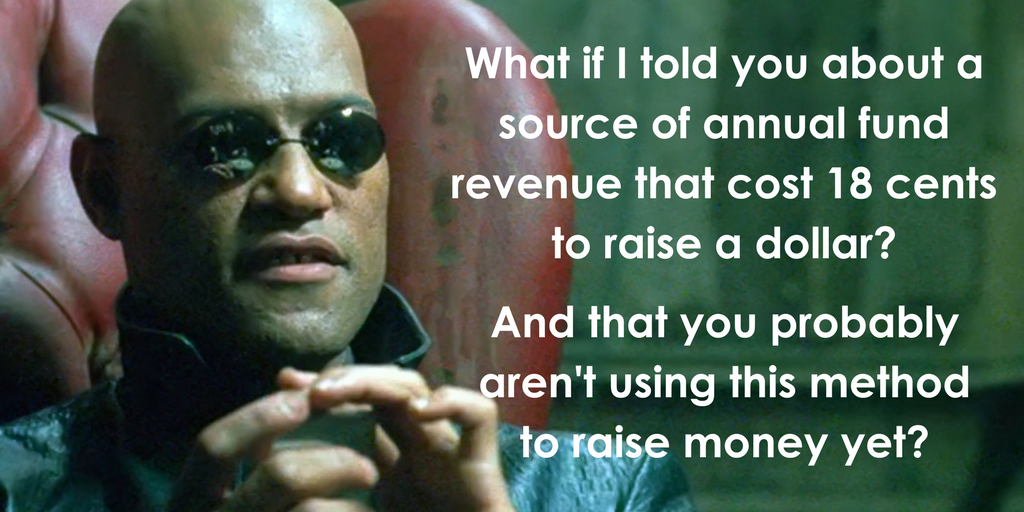
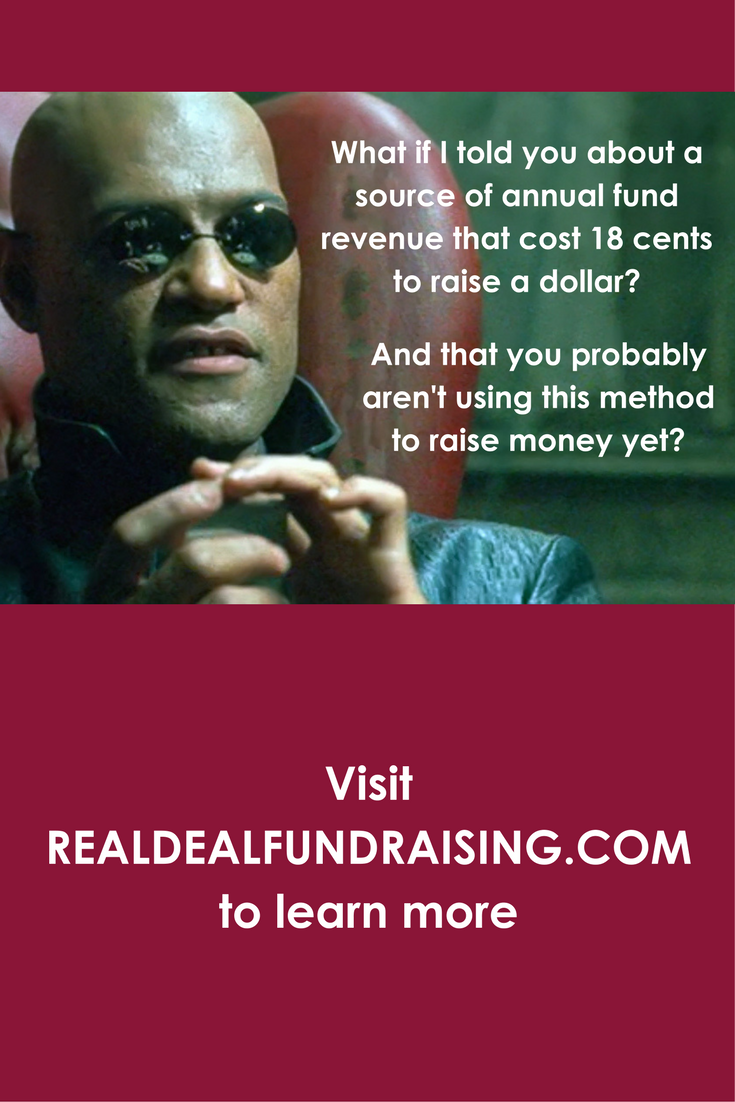
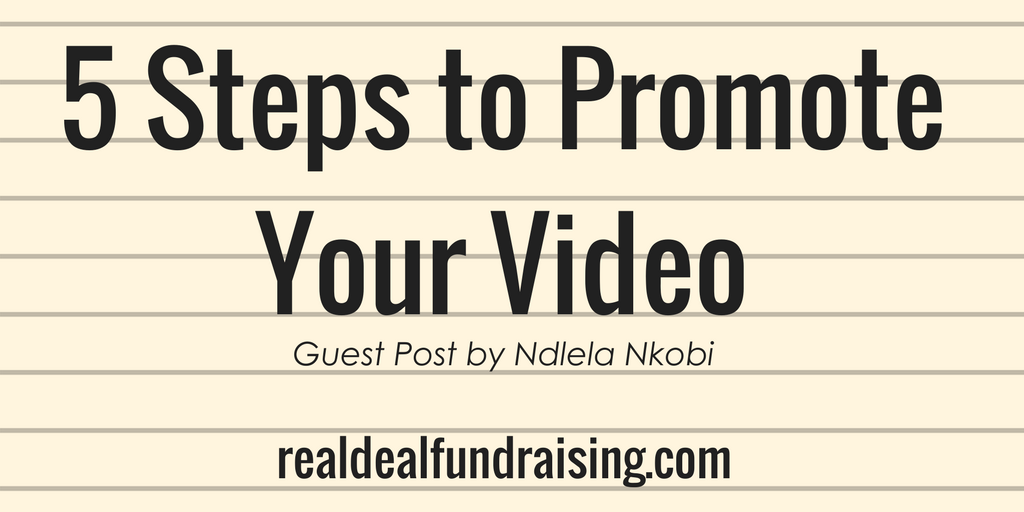
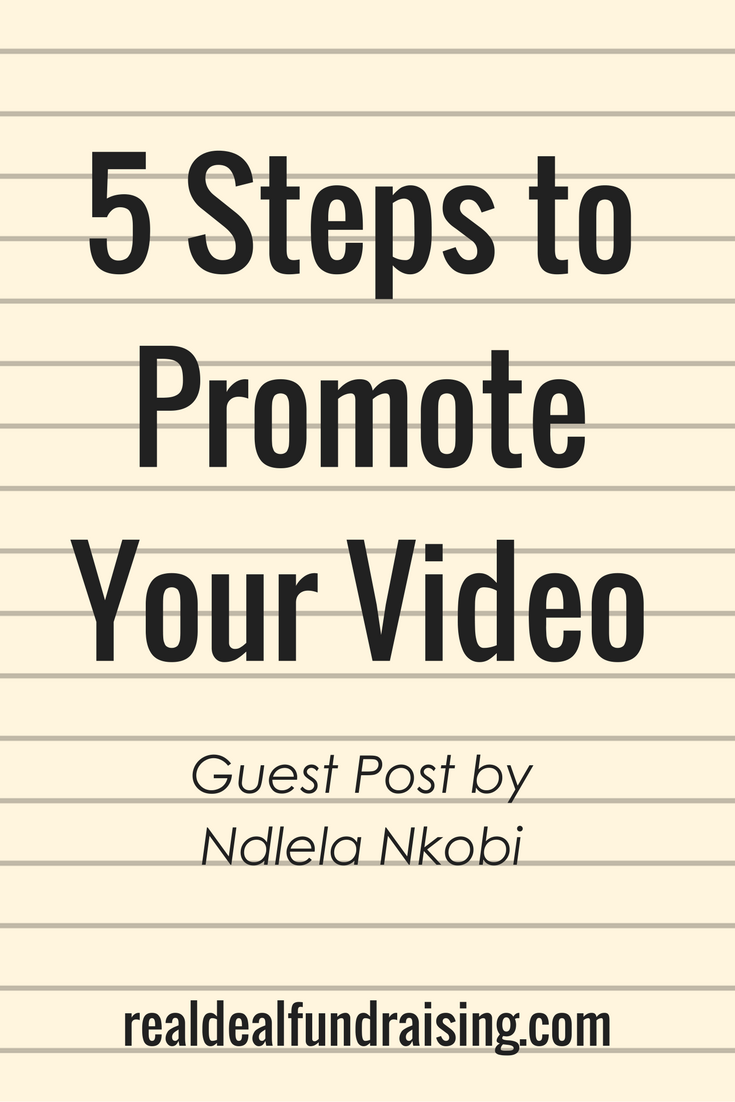



 RSS Feed
RSS Feed
